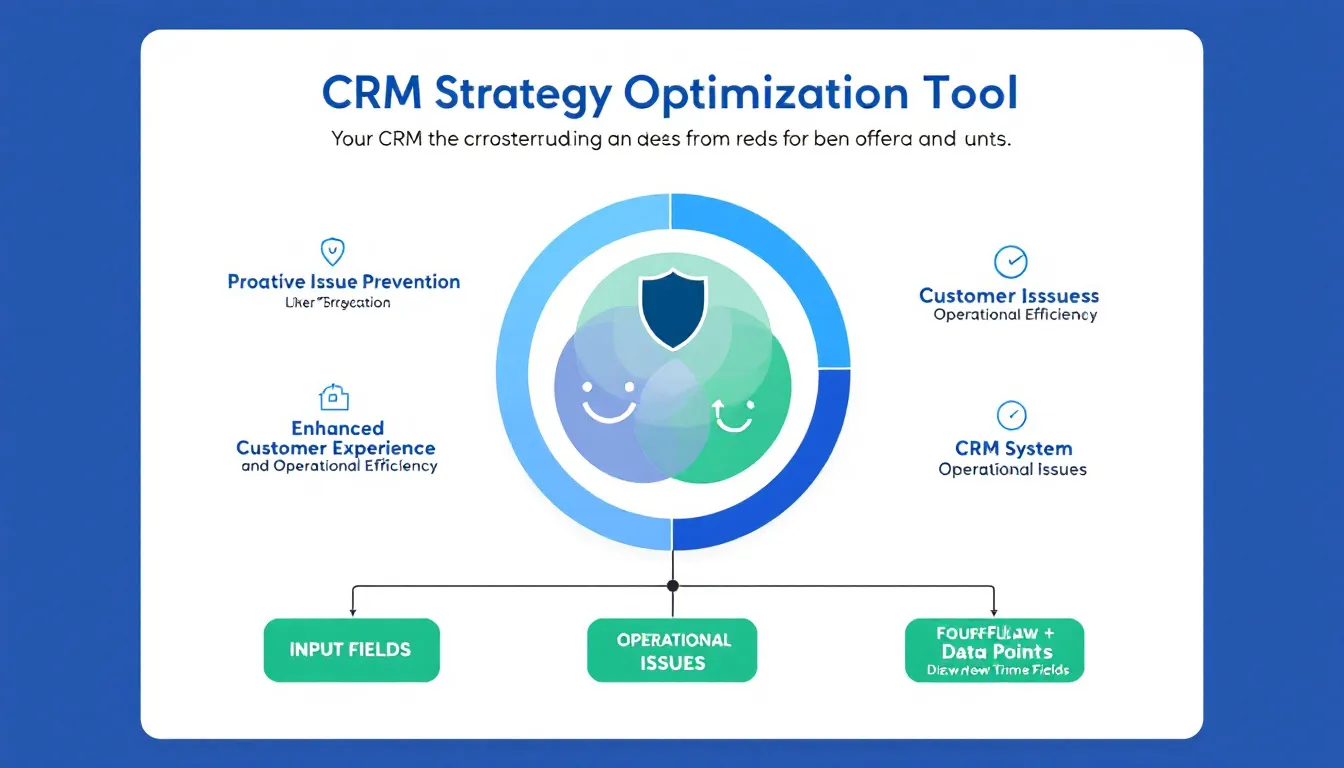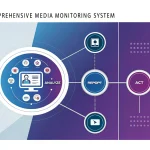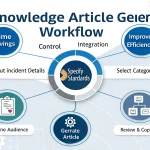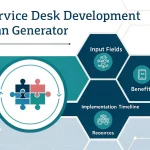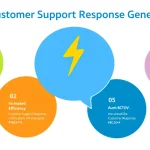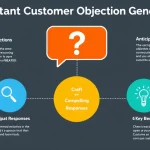Is this tool helpful?
How to Use the CRM Strategy Optimization Tool Effectively
This comprehensive CRM strategy optimization tool helps businesses identify and address potential customer issues proactively. Here’s a detailed guide on using each field:
1. Type of Business or Industry
Enter your specific business sector to receive tailored recommendations. Examples:
- Software as a Service (SaaS): Cloud-based project management solutions
- Retail Fashion: Multi-channel clothing and accessories store
2. Common Customer Issues
List recurring challenges your customers face. Sample entries:
- Technical support response delays, software integration problems, feature request backlogs
- Size availability issues, shipping delays, return process complications
3. Current CRM System
Specify your existing CRM solution to receive compatible enhancement suggestions. Examples:
- Microsoft Dynamics 365 with custom integrations
- Zoho CRM with email marketing suite
4. Customer Data Points
Detail the customer information you track. Sample entries:
- Customer lifetime value, feature usage patterns, support ticket frequency
- Purchase history, browsing behavior, social media engagement
Understanding the CRM Strategy Optimization Tool
This advanced tool analyzes your business context and customer interaction patterns to generate actionable CRM strategies. It combines industry best practices with data-driven insights to help organizations prevent customer issues before they escalate.
Key Benefits of the CRM Strategy Optimizer
1. Proactive Issue Prevention
- Early warning system for potential customer dissatisfaction
- Automated trigger points for intervention
- Predictive analytics for customer behavior patterns
2. Enhanced Customer Experience
- Personalized interaction strategies
- Streamlined communication channels
- Improved response time management
3. Operational Efficiency
- Automated workflow recommendations
- Resource allocation optimization
- Reduced support escalations
Strategic Implementation and Problem-Solving
The tool provides comprehensive solutions across multiple business scenarios:
Case Study 1: E-commerce Platform
A medium-sized online retailer implemented the recommended strategies:
- Implemented predictive inventory alerts
- Established automated shipping delay notifications
- Created proactive customer satisfaction surveys
- Result: 45% reduction in customer complaints
Case Study 2: B2B Software Provider
Enterprise software company utilized the tool’s recommendations:
- Developed usage pattern monitoring
- Implemented automated onboarding sequences
- Created early warning system for potential churn
- Result: 60% improvement in customer retention
Practical Applications and Use Cases
1. Customer Service Enhancement
- Automated ticket categorization
- Priority-based routing systems
- Proactive support outreach
2. Sales Process Optimization
- Lead scoring refinement
- Purchase pattern analysis
- Cross-selling opportunity identification
3. Marketing Campaign Management
- Segment-specific engagement strategies
- Personalized content delivery
- Channel effectiveness tracking
Frequently Asked Questions
How often should I update my CRM strategy?
Regular quarterly reviews are recommended, with monthly monitoring of key performance indicators. Adjust strategies based on changing customer needs and business growth.
Can this tool integrate with existing CRM systems?
Yes, the tool provides recommendations compatible with major CRM platforms and can be adapted for custom solutions.
What types of businesses benefit most from this tool?
All customer-facing businesses can benefit, from small retail operations to large enterprise organizations. The recommendations are scalable and customizable.
How can I measure the success of implemented strategies?
Track key metrics such as customer satisfaction scores, response times, resolution rates, and customer retention percentages.
Should I implement all recommendations at once?
It’s recommended to prioritize implementations based on impact and resource availability. Start with high-impact, low-effort changes and gradually expand.
Best Practices for Strategy Implementation
1. Change Management
- Clear communication with team members
- Phased implementation approach
- Regular training and support
2. Data Management
- Regular data quality audits
- Consistent information updates
- Strategic data utilization
3. Performance Monitoring
- Regular KPI tracking
- Customer feedback analysis
- Strategy effectiveness assessment
Advanced CRM Strategy Components
1. Predictive Analytics Integration
Leverage customer behavior patterns to anticipate needs and potential issues before they arise.
2. Automation Workflows
Implement intelligent automation for routine tasks and communications to improve efficiency.
3. Customer Journey Mapping
Create detailed maps of customer interactions to identify and address potential pain points proactively.
Long-term Strategy Development
1. Scalability Planning
- Future growth accommodation
- Resource allocation forecasting
- Technology integration planning
2. Continuous Improvement
- Regular strategy reviews
- Performance optimization
- Team feedback integration
3. Customer-Centric Evolution
- Ongoing needs assessment
- Service enhancement opportunities
- Experience optimization strategies
Important Disclaimer
The calculations, results, and content provided by our tools are not guaranteed to be accurate, complete, or reliable. Users are responsible for verifying and interpreting the results. Our content and tools may contain errors, biases, or inconsistencies. We reserve the right to save inputs and outputs from our tools for the purposes of error debugging, bias identification, and performance improvement. External companies providing AI models used in our tools may also save and process data in accordance with their own policies. By using our tools, you consent to this data collection and processing. We reserve the right to limit the usage of our tools based on current usability factors. By using our tools, you acknowledge that you have read, understood, and agreed to this disclaimer. You accept the inherent risks and limitations associated with the use of our tools and services.
